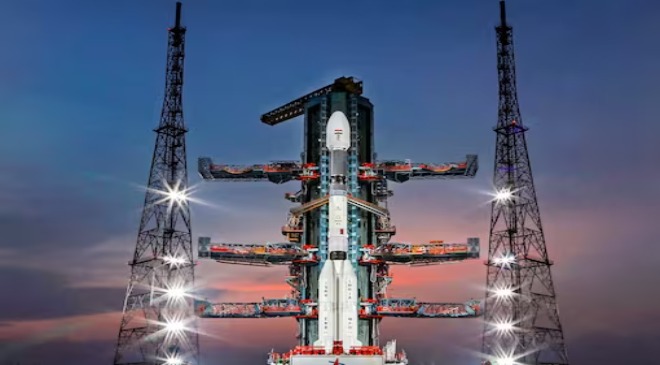UR Rao Satellite Centre director M Sankaran tells News18 that every aspect of the Chandrayaan-3 mission, likely to be launched in July, has been looked at, particularly from the experience of the Chandrayaan 2 crash
“Upbeat” and “apprehensive” is how M Sankaran, Director of UR Rao Satellite Centre, described the mood at Indian Space Research Organisation (ISRO) as the Chandrayaan-3 spacecraft reached the Satish Dhawan Space Centre in Sriharikota for a proposed launch in July.
Read More: Delhi ‘liquor scam’: South group paid Rs 100 crore in advance to AAP as part of deal, says ED
“Every aspect of the mission has been looked at, particularly from the experience of Chandrayaan 2, and all possible precautions have been taken. The mood at ISRO is both upbeat as well as apprehensive,” said Sankaran in an exclusive conversation with News18.
It is at Bengaluru’s UR Rao Satellite Centre that the payload for India’s third moon mission was successfully assembled. ISRO has a point to prove with Chandrayaan-3 as the space agency wants to showcase its ability to safely land a rover on the lunar surface and explore its environment.
The mission is a follow-up to Chandrayaan-2, which was launched on July 22, 2019 onboard the country’s most powerful geosynchronous launch vehicle. It had aimed to land a rover on unchartered lunar South Pole. However, the lander Vikram hard-landed on September 7, 2019, crashing India’s dream to become the first nation to successfully land on the lunar surface in its maiden attempt.
Read More: ‘Go Goa Gone’ from Mumbai in 7 Hours 50 Mins: Vande Bharat Offers Fastest CSMT-Madgaon ‘Runtime’
With Chandrayaan-3 reaching Sriharikota, ISRO is busy with the final stages of preparation, hoping to once again lure the nation’s gaze to the moon. The post-flight analysis of the Chandrayaan-2 mission and the learnings from it have been factored in while preparing for next month’s launch.
“Chandrayaan-3 has already reached its launch port. The preparation is going on at Sriharikota, and we do expect that sometime in July, we can lunch,” said Sankaran.
Chandrayaan-3 will be carried into space by India’s most powerful rocket, GSLV-MKIII, or LVM-3. The mission will have an indigenous lander module, propulsion module and a rover with an objective of developing and demonstrating new technologies required for inter-planetary missions.
MAJOR GAGANYAAN NEWS BY YEAR-END
India’s first manned space flight programme Gaganyaan is ISRO’s prime focus after Chandrayaan-3 launch, and the space agency is already working full-throttle on the complex mission.
“Gaganyaan is a very, very intense (mission) with lots of new developments and activities taking place. Many developments are happening for Gaganyaan that are not visible to the public and that is why this question is coming. A lot of work is going on, and we do expect that there will be something which will be visible to people during this year. There will be something which will be newsworthy,” said Sankaran.
Read More: Invalid Or Expired DL No Excuse, Insurer Liable To Pay Accident Victim’s Compensation: Bombay HC
Recently, ISRO handed over the recovery module for Gaganyaan astronauts to the Indian Navy for the training of naval recovery teams. The recovery trials were carried out in closed pools at the Water Survival Test Facility (WSTF) of the Indian Navy in Kochi. These pools simulate real-life conditions of the sea and would help validate the standard operating procedure (SOP) for the recovery of the crew and their spacecraft.
#MissionGaganyaanThe Crew Module Recovery Model was also formally handed over to #IndianNavy at its state of the art Water Survival Trg Facility (WSTF) at #INSGaruda, Kochi.The mass & shape simulated mockup will be used for familiarisation & trg of #Gaganyaan recovery teams. https://t.co/OQ6dAp3Kht pic.twitter.com/f0oyhB3KCX— SpokespersonNavy (@indiannavy) May 26, 2023
Gaganyaan aims to demonstrate human spaceflight capability by launching a crew of three members into an orbit of 400 km for a three-day mission and bringing them back safely to Earth by landing in Indian waters.





































